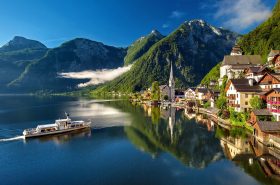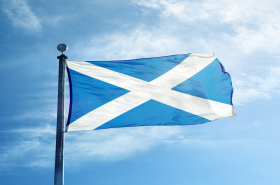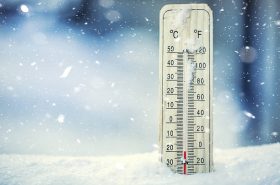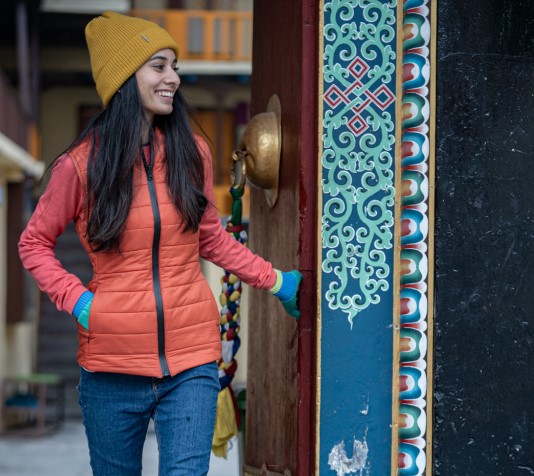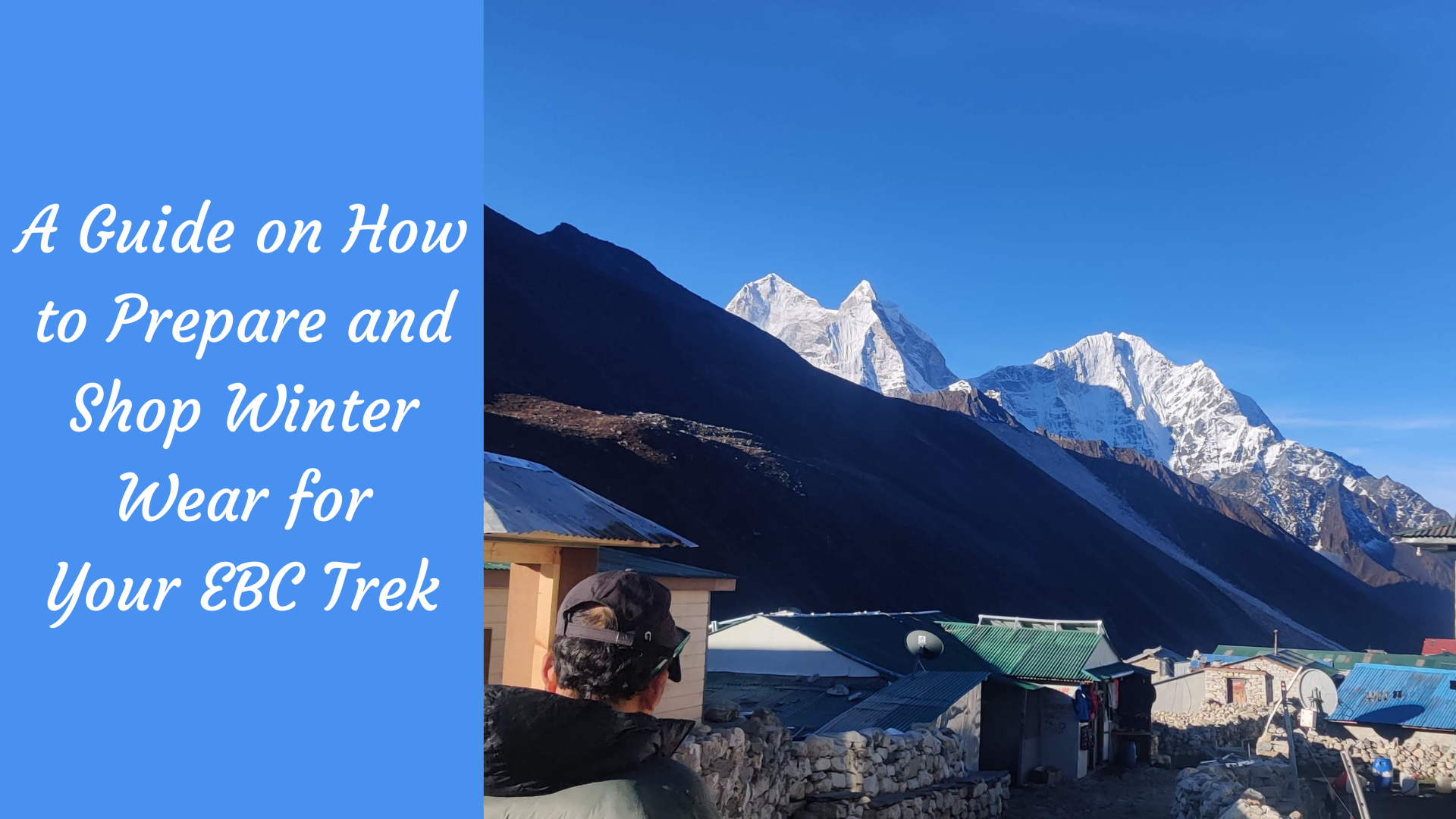
Table of Contents
A Guide on How to Prepare and Shop Winter Wear for Your EBC Trek
The EBC (Everest Base Camp) trek is one of the most popular treks on a climber’s checklist. It needs a lot of preparation and dedication. During your prep, you also need to shop for winter wear that’s appropriate for the trek.
Mount Everest has two base camps on either side of the mountain. The South Base Camp is in Nepal, and the North Base Camp is in Tibet.
Late Sep-Nov and Feb-May are considered the main trekking months. You’ll experience fairly stable conditions, good visibility, and temperature getting up to about -6°C.
You might also encounter groups of climbers in late April or early May preparing for their Everest summit.
In this guide, I’ll explain what you should know about the Everest Base Camp trek. We’ll learn how to prepare and the essential winter gear.
In the end, you’ll also get to know about Rohan Desai’s personal experience on the trek. Rohan is one of Kosha’s customers who got the opportunity to get on this trek a few months ago.
So let’s get into it right away!
Weather in Nepal
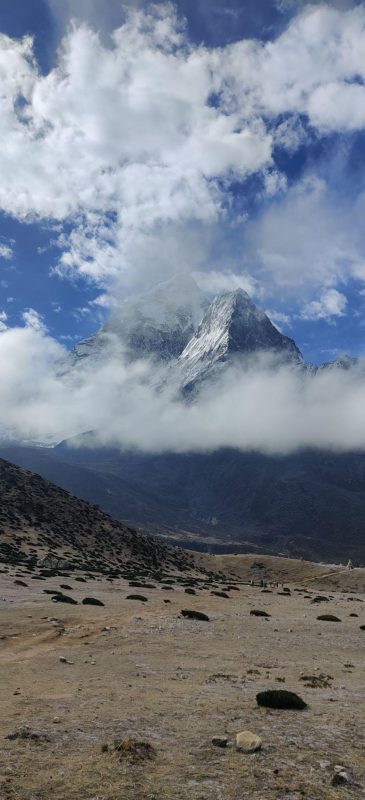
Climate in Nepal
If you’re going to the Indian side, you must be aware of Nepal’s weather. Although late Nov-Feb is extremely cold, clear skies are usually the norm. You see quieter trails and teahouses, which add to the exhilarating feeling.
November to February are Nepal’s winter months. During this season, the temperature is higher during the day than the night and early morning.
During the initial phase, the days are warmer, and the nights are colder. By cold, I mean the temperature goes below freezing point. The snow-capped mountains with clear blue skies look spectacular.
In December, the temperature is generally around 4°C. But, the average minimum temperature during nighttime is around -14 °C.
During the middle phase of the season, temperatures drop below freezing point at night. It happens throughout the Everest region. During this period, winter weather is at its peak. It’s pretty windy, and you must face the dreaded windchill factor.
But, there are a few sunny, clear, and bright days too. Yet, if you insist on trekking in January, it needs proper guidance and preparation. The temperature during this month usually ranges between 4 °C to -17 °C.
February is the last month of Nepal’s winter season. During this period, the days are warm across the Base Camp. During the latter half of the month, visibility is good too. The temperature gradually starts increasing, which makes the days warm.
The snow along the trail begins to melt. So, you must be careful while walking as it could be slippery. And don’t forget to wear shoes having a good grip.
Also, remember, you might still experience snowfall. So please prepare yourself to stay warm in extreme conditions. The temperature during this time ranges approximately between 4 °C to -14 °C.
Tips to Trek At EBC
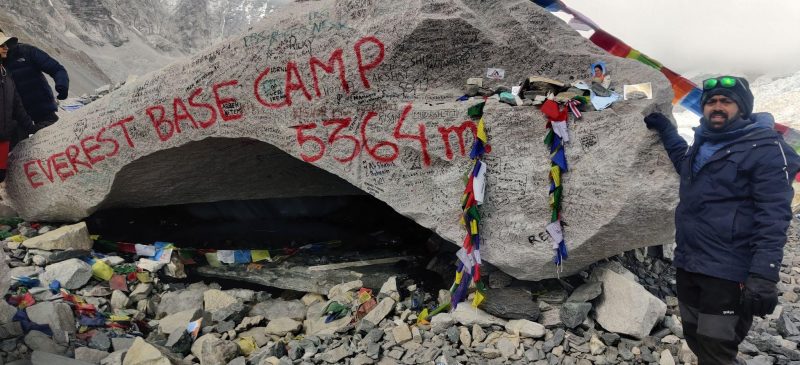
Trekking at EBC
While you’re at it, you need to be alert and aware at all times. You should follow a few tips to ensure that you’re on the right track. So here are a few tips you could follow:
1. Don’t Travel Alone
You should have a guide along with you on your EBC trek. They’re locals, and they’ll know how to deal with these conditions.
The guide also knows the path better than you. So if you get lost, they’re there to help you.
2. Layer Your Clothing
While trekking towards EBC, you need to wear a layer of clothes. The layers make it warmer and work as an insulator. It is the best way to avoid the risk of health concerns.
3. Start Early in the Morning
To reach your destination early, you must start your trek early in the morning. The days in the winter season are shorter.
Hence, if you start your trek late, then you will find it difficult to reach your destination on time. Hence, beginning your trek in the morning is recommended for the Everest Base Camp trek.
Challenges
1. Altitude Sickness
The EBC trek is a high-altitude trek. You need to cover about 5300 meters to conquer the EBC. So while traveling towards higher elevations, some might experience high-altitude sickness.
You should walk at your own pace. Don’t try to match up with someone else’s pace.
2. Shorter Days
Winter days are shorter in Everest Region. If you start your trek late, you’ll find it challenging to reach your destination as planned.
Hence, you should start your trek as early as possible. As daytime passes, it becomes tougher to reach your destination early.
3. Freezing Temperatures
Winter is the toughest season for trekking in the Everest Region. As the temperature falls below freezing point, it’s hard for trekkers to reach EBC.
You’ll experience such temperatures mainly during nighttime and early morning. So you must shop winter gear accordingly to prepare yourself.
Tips to Train for an EBC Trek
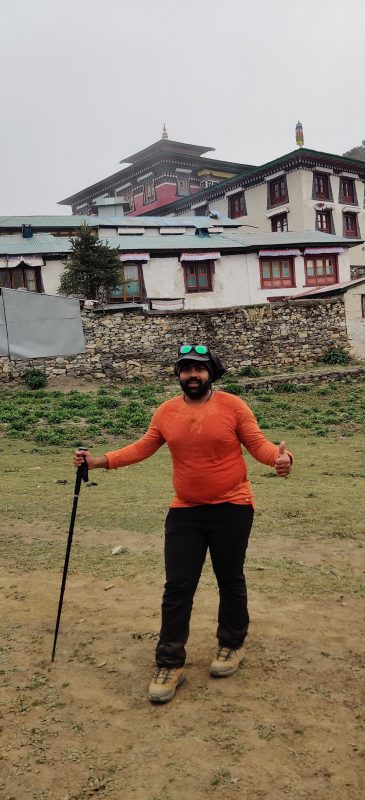
Shop winter gear for an EBC trek
Getting into the groove for an EBC trek takes a lot of effort. And you need to be ready before you get started. The prep doesn’t end when you shop for winter gear that’s suitable for the trek.
So here are a few tips to follow while training for the trek.
1. Replicate the Conditions
The best way to train for the EBC trek is by trying to replicate the conditions as much as possible. If you get accustomed to similar situations, your job gets easier during the trek.
There are some ways you can get into the habit and replicate these conditions. Start wearing your hiking boots and daypack with some weight in it. Go hiking on long distances and practice elevation gain and loss too.
2. Get Used to Your Gear
You should ensure to shop for winter gear at the right time for your trek. For example, get your trekking boots early and start testing them. Whether it’s local trails or a supermarket, you should get used to your boots.
You should let your feet get accustomed to the boots. Also, ensure that you check how warm and comfy you’re feet feel in them. Keep a finger’s width of space between your toes and the end of the boot.
If they’re uncomfortable after a few hours on the trail at home, beware. It could get worse after a few days on the trek too.
The same thing applies to your daypack. Get your hands on it early and wear it during your practice hikes. Get used to its weight and learn to adjust it to maintain comfort.
You should add a bit more weight as you get some more practice. It will prove to be very useful for the all-important EBC trek days.
All your equipment seems to weigh more after a few days on the trail. If you get a hang of heavy backpacks, you’ll be far better prepared.
3. Do Cardio 2-3 Times a Week
Cardio workouts train your body to work hard with less oxygen. The activities could include running, jogging, and swimming as well. It will help you maintain your breath and focus at high altitudes during a trek. And you can enjoy the hike even more.
Develop your endurance levels with a simple workout 2-3 times weekly. You can either get into the gym or work at home. You should increase the level of difficulty and duration over time.
You want to ensure that you put yourself in tough situations to see how your body reacts. After all, this prep is like a trailer of what lies ahead. It will prepare you well for the EBC trek.
4. Nutrition Is Necessary
While you step up your training, ensure that you’re stepping up your nutrition too. Burn more calories and consume proteins and nutrients to build your muscles and stay healthy.
5. Learn a Few Stretches
You should learn a few stretches and make them a part of your muscle memory. You can do your stretches before and after a day on the trail. During your practice hikes, dedicate 5-10 minutes towards the end of your day to stretch.
It will let you sleep well, and your body will feel refreshed in the morning. Dynamic stretches can warm you up in the morning as well before you get going again. Some static stretches can loosen and heal your muscles while resting at night.
6. Give Yourself Enough Time
This point needs all your attention. You can follow all the above steps. But what if you haven’t given yourself enough time to see the impact? It won’t work out during the trek.
Start your training at least 8-12 weeks before the EBC trek. You should approach it the way you should climb a mountain. You won’t get much benefit by rushing your training just weeks before your trek.
Move ahead slowly and steadily with your training routines. But please give your body enough time to adjust.
7. Taper Off Before the Trek
When the trek days are nearing, keep a low profile. Don’t push yourself into too much exertion. It will hamper your health and preparations.
If you’ve started early, let your body rest for a few days or a week. But continue to stay active and practice stretches at regular intervals. You want to ensure you arrive fresh and ready to hit the trail.
Consider Layers to Shop Winter Wear for an EBC Trek

Shop winter layered clothing for the EBC trek
When you talk of treks during winter, this is a crucial part. Layering is vital when it comes to clothing for the trek. Trekking involves lots of sweating. So you should layer it to let the moisture pass through the layers.
Wear something that keeps you warm, and dry and feels comfortable on strenuous paths. You should arrange your clothes according to three layers:
Options to Shop Winter Base Layers
The base layer is always in direct contact with your skin. So this layer shouldn’t absorb sweat or wetness. You should pick a moisture-wicking and comfy fabric.
Since it’s closest to your skin, it shouldn’t be restrictive. Here are some base layers for you to shop for winter wear for the trek.
1. Hiking T-Shirt
This t-shirt, or any base layer, shouldn’t have cotton. This fabric tends to absorb sweat a lot. As I’ve mentioned, that’s something you don’t need.
The material should drive away any moisture on the t-shirt. It should be breathable too. Consider packing 4 or 5 of these t-shirts.
2. Leggings
The leggings for your bottoms should be loose fits and comfortable for you. Most trekkers highly recommend Merino wool. Bring along 2 or 3 such leggings on the trek.
3. Underwear
Trekking could last 4 or 7 hours a day. As a result, sweating is common. So, pack good quality breathable underwear. You should consider this when you shop for winter gear for the EBC trek.
You should carry along at least 2-3 underwear for the trek.
Options to Shop Winter Mid-Layers for the Trek
This layer is also called the insulating layer. It is a good layer for body heat retention.
1. Fleece for the Torso and Legs
For the middle layer, fleece clothes are a great choice. They’re lightweight and comfortable. It also provides some warmth and breathability.
Options to Shop Winter Outer Layer for the Trek
The outer layer should ideally be windproof and waterproof. It’s because the weather is unpredictable in the Everest region. And if you’re going on a trek, you must be safe.
1. Windproof and Waterproof Jackets
Windproof and waterproof jackets are a must for the trek. This layer is essential when you reach higher altitudes where the weather changes continuously.
To beat the cold and the wind, you must have good quality jackets. You should not compromise on quality.
2. Waterproof Trekking Pants
Hiking pants that dry up quickly can be beneficial for this trek. Warmer pants are available if you trek during the off-season. But it would help if you did not neglect comfort. Hence, you should wisely select the pants for a trek.
Options to Shop Winter Headwear
Protecting your head and keeping it warm is essential. You have a few options when you shop for winter gear for your head. It will prove to be useful while you’re on the EBC trek. So let’s look at a few of the headwear you should consider.
1. Hat
The sun can be harsh while you’re trekking. So for minimum exposure, bring in a hat or two. You should use a nice, comfortable, and lightweight trekking hat.
2. Beanie
A beanie is for cold nights. It will cover up your ears and head, and you will have an easy time against the wind and the cold.
3. Neck Gaiter or Scarves
You can use this piece to cover up your neck, mouth, and nose. It will protect you from the freezing wind, which is a hurdle while trekking.
Options to Shop Winter Footwear for the Trek
Here’s one of the essential things to make your Everest Base Camp trek comfortable and enjoyable. A good pair of footwear makes your walks less strenuous and more enjoyable.
1. Hiking Boots
Your shoes complete your trek looks. It’s an area you must get right, especially during winter. Getting an excellent comfortable fit is a must-have for the best trekking experience.
A good quality boot that fits you well is a perfect choice. As for the snowy paths, waterproof boots will keep your socks dry.
2. Slippers
You might want slippers for yourself in the teahouses at night. It’s an excellent way to reduce the load on your feet after an exerting day. So, bring a pair of slippers for your EBC trek.
3. Gaiters
Gaiters are waterproof cloths that prevent water, rocks, and mud from entering your boots.
Consider the weather and season before packing for an Everest Base Camp Trek. You might feel like packing more clothes in winter than in spring. But you have the above gear to help you out and keep you safe during your treks.
4. Woolen Socks
As much as your upper body needs protection, your feet need it too. So, you should invest in good quality woolen socks when you shop for winter wear.
The socks that dry quickly bring comfort along with warmth. Like clothing, damp footwear isn’t a good sign. You also need the correct pairs of socks to protect your feet from blisters.
If you don’t have all your gear yet, consider buying it in Kathmandu. You’ll support local shops and get what you’re missing.
When you return from the trail and have gear you no longer need, consider donating it. Small guesthouses collect your items and send them to people who need them in Nepal. It could include gloves, sweaters, or even sleeping bags.
A Trekker’s Personal Experience at the Everest Base Camp Trek
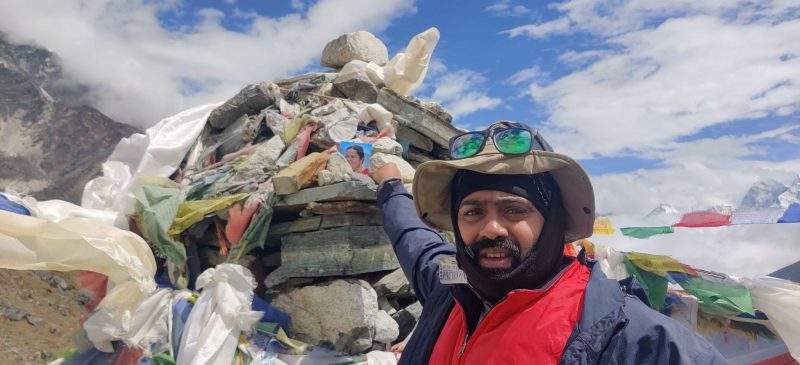
EBC trek experience
Rohan Desai: “Do not take the preparations lightly. Make a schedule and be dedicated to it. The harder you sweat here, the easier it will be up there. Do not ever underestimate the might of the Himalayas.
So listen to instructions carefully from your trek leader/guide. Last but not least, please listen to your body, and do not try to be a hero by not expressing any symptoms.
It’s human to feel a little uncomfortable at those heights. No need for any bravado, and take the acclimatization days very seriously. Do not miss the day hikes and climbs. They are done to ensure you finish the trek in good shape.”
Rohan Desai, one of Kosha’s customers, recently went on a trek to EBC. He shared his experience climbing one of India’s most fascinating treks. Here’s a summary of his experience.
Like many other trekkers, the EBC trek has always been on Rohan’s bucket list. And his wife gifted him an opportunity to fulfill his dream on his 32nd birthday. She wanted him to push his limits through this trek.
After many postponements, he finally took off on 7th May and started trekking the next day. The first two days were at Phakding and Namche Bazaar. They spent a day at the latter spot before moving towards Tengboche.
They moved to Dengboche and stayed there for two nights to acclimatize. After a day hike, they were at Lobuche the next day. On the way, they came across the Thukla Pass.
The weather at this spot tested them quite a bit. It had been that way for two days. On the final day, they went on a hike to Gorakshep. Once they had lunch, they set out for their final destination, the EBC.
He mentioned that there weren’t any COVID restrictions he needed to follow during the trek.
When they reached Lukla, he mentioned that the temperature was below 10 degrees Celsius throughout the day. At the same time, the night was chilly out there.
The rainy and windy saw lots of fog. It was difficult to even see beyond one meter. Also, lesser oxygen and steep patches made it a very challenging trek.
As part of the gear, he carried Kosha’s 4-in-1 jacket. He also commends the products by saying that they are light and easy to carry. More importantly, it does its job.
How did he make his experience memorable you ask? He put up his mother’s picture at the Thukla Pass and EBC. Now he lost his mother two months before the trek. It’s quite a personal loss to deal with.
But this pushed him to train harder in the limited window available. He focused on building his lower body strength and endurance.
He also shares that he wouldn’t want to change anything about his experience during the EBC trek.
FAQs
Certainly! Here are some frequently asked questions (FAQs) about preparing and shopping for winter wear for your EBC (Everest Base Camp) trek:
What is the best time to trek to Everest Base Camp for winter wear shopping?
The best time to shop for winter wear for an EBC trek is in the months leading up to your trip. Plan to start shopping at least a few months in advance to ensure you have everything you need and to take advantage of sales and discounts.
What are the essential clothing items for an EBC trek in the winter?
Essential winter wear for an EBC trek includes insulated jackets, thermal base layers, waterproof and windproof outer layers, fleece or down mid-layers, warm pants, and cold-weather accessories like gloves, hats, and scarves.
How do I choose the right winter jacket for the trek?
Look for a down or synthetic insulated jacket with a good warmth-to-weight ratio. It should also be lightweight and packable, as you’ll need to carry it in your backpack during the trek. Ensure it is waterproof or has a waterproof shell.
What kind of base layers are recommended for winter trekking in the Himalayas?
Merino wool or high-quality synthetic thermal base layers are the best choices. They wick away sweat, keep you warm, and are comfortable against the skin.
Should I invest in a high-quality pair of trekking pants for the EBC trek?
Yes, investing in good-quality waterproof and insulated trekking pants is essential for the cold and often wet conditions you’ll encounter during your EBC trek. They should be breathable and provide good mobility.
Conclusion
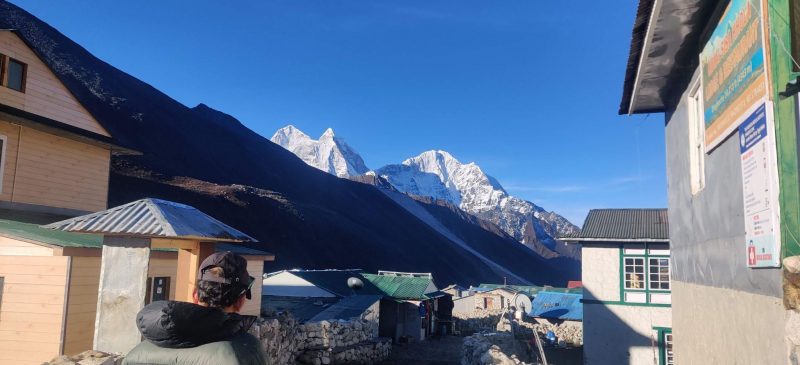
Scenic mountains
So now I hope you know what goes into the preparations for an EBC trek. And yes, you should shop for winter wear that’s appropriate as part of it.
But if you want to conquer the EBC trek, there isn’t a rosy path ahead of you. You need to work your way up there. You will face challenges but hang around. If you do that, you will reap the benefits, much as Rohan did.
This post was written by Kosha team member – Shawn Mathias
